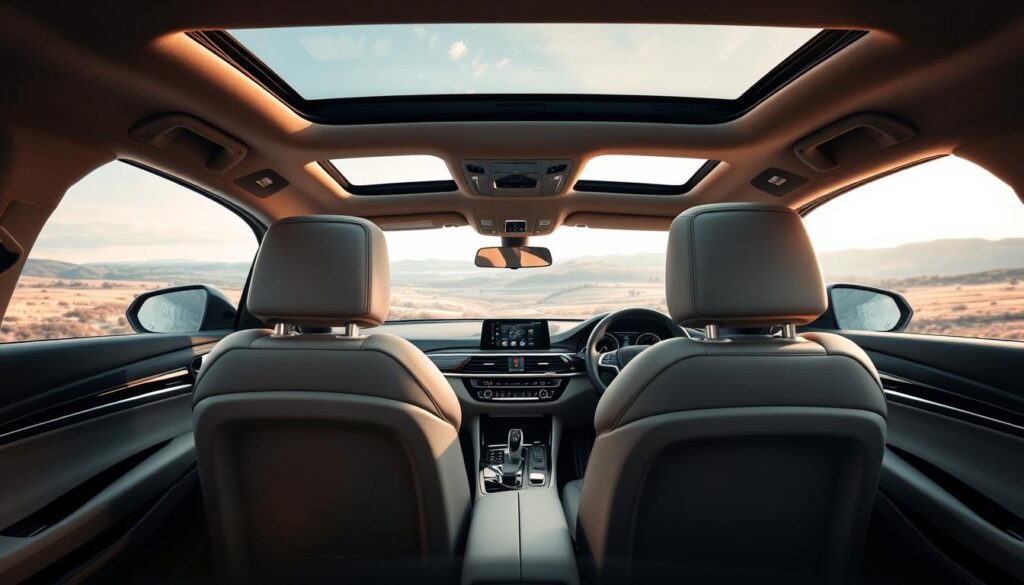
Have you ever wondered why German cars are often praised for their remarkable blend of luxury and performance, yet remain versatile enough for everyday use? The superior performance and adaptable nature of these vehicles stem from German engineering excellence, which has established them as frontrunners in the automotive world. This article will dive into how German cars and their flexibility cater to a variety of consumer needs, highlighting their innovative features, safety advancements, and the legacy of unmatched engineering.
Key Takeaways
- German cars are known for superior performance and flexibility.
- Innovative engineering practices influence everyday usability.
- Safety features reflect a commitment to driver and passenger protection.
- The historical significance of German automotive design is undeniable.
- Future trends in flexibility will shape new car developments.
- Customization options allow for personal expression in vehicle choice.
- Eco-friendly initiatives are reshaping German automotive manufacturing.
The Legacy of German Engineering
German engineering excellence has profoundly influenced the automotive world, making it a leader in innovation and design. The history of German automotive innovation dates back over a century and includes pivotal developments that have shaped modern vehicles. This section will explore how iconic manufacturers have contributed to this remarkable legacy.
A Brief History of German Automotive Innovation
The journey of German automotive innovation began with Karl Benz’s introduction of the first gasoline-powered car in 1886. This groundbreaking invention laid the foundation for the automotive industry not only in Germany but worldwide. Over the decades, various manufacturers have built upon this legacy, creating vehicles that offer unparalleled performance, safety, and luxury.
Key Manufacturers and Their Contributions
Numerous brands have played a crucial role in establishing Germany as a beacon of automotive excellence. Each brand is renowned for specific innovations:
- BMW: Known for its performance-oriented vehicles, BMW emphasizes “The Ultimate Driving Machine” philosophy.
- Mercedes-Benz: A pioneer in safety and luxury, Mercedes-Benz introduced numerous features like anti-lock brakes and airbags.
- Audi: Recognized for its quattro all-wheel-drive technology, Audi has incorporated advanced electronics into its vehicles to enhance performance.
- Porsche: Famous for sports cars that exemplify speed and engineering precision, Porsche stands out with its iconic 911 model.
- Volkswagen: With the creation of the Beetle, Volkswagen revolutionized affordable cars, and today it focuses on sustainability and electric vehicles.
This collaboration of brands showcases the essential role of German automotive manufacturers in shaping the industry. Their commitment to durability, precision engineering, and relentless pursuit of innovation highlights the significance of German engineering in providing superior vehicles tailored to diverse consumer needs.
Understanding Flexibility in German Cars
Flexibility in automotive terms represents a critical aspect of modern vehicle engineering. This quality refers not only to how vehicles adapt to various driving conditions but also emphasizes their performance versatility. In German cars, achieving this level of flexibility involves sophisticated technologies that enhance both comfort and handling.
What Does Flexibility Mean in Automotive Terms?
In the automotive world, flexibility encompasses a car’s ability to seamlessly adjust to diverse driving conditions. This includes the capacity to handle different terrains, weather variations, and user preferences. The integration of adaptive suspension technologies plays a significant role in defining this flexibility. Such systems allow vehicles to adjust their dampening characteristics on-the-fly, providing a smoother ride on uneven surfaces while maintaining sportier handling in more dynamic scenarios.
Examples of Flexible Design Features
German automotive manufacturers illustrate flexibility through various innovative design features. A prime example includes modular platforms, which enable multiple vehicle models to share the same underlying architecture. This design approach not only streamlines production but also allows for variations that meet diverse consumer needs. Another notable feature is adjustable cargo spaces found in models like the BMW X5, which offers versatile storage solutions that can cater to different lifestyles.
Performance Meets Practicality
German cars are renowned for their exceptional performance alongside their remarkable practicality. The balance between driving dynamics and everyday usability is a hallmark of leading brands like BMW and Audi. Owners of these vehicles enjoy not only thrilling power but also the practicality to utilize their cars for daily commutes.
Balancing Power and Everyday Usability
When it comes to balancing power with everyday usability, German automakers excel in delivering vehicles that perform well on the track while being suitable for everyday life. This balance is achieved through precise engineering, ensuring a seamless experience behind the wheel. Features like adaptive suspension systems enable vehicles to adjust to various driving conditions, enhancing both comfort and performance.
Advanced Technologies Enhancing Flexibility
The integration of advanced technologies plays a crucial role in enhancing flexibility within German automobiles. Innovations such as customizable drive modes allow drivers to adapt the car’s power delivery and handling characteristics according to their preferences or driving conditions. These technologies not only improve driving dynamics but also significantly contribute to overall fuel efficiency, reinforcing the practicality aspect of daily driving.
The Role of German Cars in Motorsport
The relationship between German cars and motorsport is deeply rooted in a history of high performance and engineering excellence. This arena fosters significant advancements that often trickle down to consumer vehicles. Innovations driven by racing create a link between competitive environments and everyday driving experiences, enhancing the capabilities of automobiles produced by brands renowned for their engineering prowess.
Innovations Driven by Racing
German manufacturers continually push the envelope in motorsport innovations. Racing technology has proven instrumental in refining vehicle dynamics, powertrain efficiency, and aerodynamic performance. The introduction of the Audi Quattro all-wheel drive, for instance, marked a revolutionary change in handling and traction, allowing drivers to conquer diverse terrain with confidence. Lightweight materials were also developed in motorsport settings, enhancing speed while maintaining structural integrity. These advancements illustrate how race conditions induce changes in production methods, paving the way for consumer vehicles that are faster and more responsive.
How Motorsport Influences Everyday Vehicles
Many of the technologies forged in the crucible of competition find a place in everyday cars. Practical applications of racing technology enable enhancements in safety, performance, and efficiency. Consumers benefit as features initially designed for the racetrack become standard in vehicles that prioritize usability. The high-performance specifications and robust engineering observed in motorsport translate effectively to models that offer exhilarating driving experiences without sacrificing comfort or accessibility.
Safety Features in German Cars
Safety is a top priority for German automotive manufacturers, driving the continuous development of state-of-the-art safety technologies. The incorporation of cutting-edge safety features ensures that vehicles not only perform well but also protect passengers effectively. These technologies serve as the backbone of modern German cars, enhancing both driver confidence and overall vehicle performance.
State-of-the-Art Safety Technologies
German cars are renowned for integrating an array of advanced safety technologies that significantly contribute to driver and passenger protection. Notable features include:
- Adaptive Cruise Control: This technology automatically adjusts the vehicle’s speed to maintain a safe distance from other cars.
- Lane-Keeping Assistance: Designed to help prevent unintentional lane departures, this feature employs sensors to monitor lane markings and gently steers the vehicle back into the lane.
- Automated Emergency Braking Systems: An essential component that can detect imminent collisions and apply brakes automatically to mitigate the impact or prevent an accident.
Flexibility in Safety Design Across Models
The flexibility of safety design in German cars allows manufacturers to tailor features for various models while maintaining high safety standards. This adaptability enables different segments to benefit from cutting-edge safety features suited to their specific needs. For instance:
| Model | Standard Safety Features | Optional Upgrades |
|---|---|---|
| Audi A6 | Automated Emergency Braking, Lane-Keeping Assistance | Adaptive Cruise Control, Blind Spot Monitoring |
| BMW X5 | Park Distance Control, Rear-View Camera | Active Driving Assistant, Traffic Jam Assistant |
| Mercedes-Benz C-Class | Collision Prevention Assistance System | 360-Degree Camera System, Active Blind Spot Assist |
This personalized approach to safety ensures that every vehicle can cater to its targeted consumer group while still prioritizing the best in safety technologies. Such a strategy maintains the integrity and reputation of German manufacturers as leaders in automotive safety.
Eco-Friendliness and Sustainability

German automotive manufacturers are redefining their approach to vehicle production with a strong commitment to eco-friendliness and sustainability. The industry’s response to environmental challenges has led to the development of innovative technologies aimed at reducing carbon footprints and enhancing energy efficiency. As the demand for eco-friendly German cars continues to rise, companies are adapting their strategies to meet consumer preferences and regulatory standards.
How German Manufacturers Are Adapting
German brands are making significant efforts to integrate sustainability into their operations. Companies like Volkswagen and BMW are leading this transformation. Volkswagen has pledged to increase its range of electric cars, aiming for a substantial reduction in emissions by committing to an all-electric lineup by 2030. Simultaneously, BMW is focusing on hybrid innovations, enhancing its current models to offer better fuel efficiency and lower environmental impact.
Electric and Hybrid Innovations
The surge in research and development within the electric vehicle market showcases Germany’s commitment to sustainability. Electric cars designed for optimal energy use are not only improving driving experiences but are also setting new standards in technology. Hybrid innovations provide consumers with versatile options that combine the advantages of gasoline engines and electric powertrains. This approach illustrates how auto manufacturers are addressing both performance and environmental responsibility.
Customization and Personalization Options
In the competitive landscape of German automotive manufacturing, offering customizable interior options and personalization has become essential. Consumers seek to create vehicles that reflect their unique tastes and preferences, enhancing their driving experience.
Tailoring Your German Car Experience
With many brands providing various customizable features, drivers can create an atmosphere that aligns with their style. Whether it’s selecting luxurious leather upholstery, personalized dashboard aesthetics, or even ambient lighting systems, these options cater to diverse preferences. The flexibility offered does not compromise quality, as renowned manufacturers aim to maintain the high standards associated with German engineering.
Popular Accessories and Features
Accessories play a critical role in enhancing both functionality and comfort within German vehicles. Some popular accessories include:
- Advanced multimedia systems with touch-screen interfaces.
- Adjustable seating configurations for optimal comfort.
- High-quality sound systems that elevate entertainment experiences.
- Smart storage solutions, including under-seat compartments and organizing units.
As personalization becomes more prevalent, the landscape of German cars continues to evolve, providing options that encourage unique adaptations for every driver.
| Feature | Description | Benefits |
|---|---|---|
| Seating Options | Varied seat styles and materials | Enhanced comfort and style |
| Multimedia Systems | Integrated sound and navigation features | Improved entertainment and convenience |
| Ambient Lighting | Customizable lighting choices | Creates a personalized atmosphere |
| Storage Solutions | Smart compartment designs | Increased organization and accessibility |
Driver Comfort and Interior Space

German cars are celebrated for their dedication to driver comfort and thoughtful interior space. These vehicles are designed with a variety of flexible interior designs that adapt to the needs of passengers and cargo alike. From spacious seating arrangements that accommodate families to innovative storage solutions for everyday needs, German automotive engineering places a strong emphasis on user experience.
Flexible Interior Designs for All Needs
Flexibility in interior layouts becomes a hallmark of German cars, enabling a customizable driving environment. Features such as adjustable seats, modular storage compartments, and foldable rear seats enhance practicality. These designs cater to different lifestyles, allowing for seamless transitions between daily commuting and weekend adventures.
Ergonomics and Passenger Comfort
Attention to ergonomics ensures that both drivers and passengers enjoy comfort during long journeys. Carefully engineered seat designs provide lumbar support while controls are intuitively placed for easy access. The result is a driving experience that prioritizes well-being without compromising on style.
| Feature | Description | Benefits |
|---|---|---|
| Adjustable Seats | Seats that can be modified in various ways for optimal support | Enhances driver comfort and accommodates different body types |
| Modular Storage | Flexible compartments that adapt to various cargo needs | Maximizes interior space and organization for passengers |
| Intuitive Controls | Ergonomically placed buttons and touchscreen interfaces | Makes for a convenient and distraction-free driving experience |
The unyielding commitment to driver comfort, spacious interior options, and ergonomic details highlights the dedication of German manufacturers to enhancing every ride. This thoughtful integration of flexible interior designs clearly demonstrates a focus on creating a superior passenger experience.
A Look at Different Models
The German automotive industry is known for its versatility, offering a wide range of models that cater to diverse consumer needs. In this section, we will examine three distinct categories: sedans, SUVs, and sports cars. Each segment highlights the inherent flexibility in models available from major manufacturers, adapting technology and design to meet varying performance demands and lifestyle requirements.
Comparing Sedans, SUVs, and Sports Cars
Sedans are often celebrated for their balance between comfort and performance. German car models in this category, such as the Audi A4 and BMW 3 Series, deliver a smooth ride while incorporating advanced technology for a superior driving experience. Meanwhile, SUVs like the Mercedes-Benz GLE and Volkswagen Tiguan offer increased cargo space and higher seating positions, catering to families and adventurous spirits alike.
Sports cars, epitomized by the Porsche 911 and the BMW M4, prioritize speed and handling, showcasing the highest performance attributes of German engineering. Each category not only provides specific advantages but demonstrates the flexibility in models available to accommodate changing preferences.
Flexibility Across the German Automotive Portfolio
The flexibility in models among German car manufacturers allows consumers to choose vehicles that suit their lifestyle. Whether it’s the practical sedan offering efficiency for daily commutes, the spacious SUV designed for family outings, or the high-octane sports car for thrilling drives, the German automotive landscape adapts to meet various demands.
Below is a comparative overview of these categories that emphasizes their unique attributes:
| Model Type | Key Features | Ideal For |
|---|---|---|
| Sedans | Comfortable interiors, fuel efficiency, advanced tech | Daily commuters, business professionals |
| SUVs | Spacious cargo, higher seating, off-road capabilities | Families, adventurers, urban drivers |
| Sports Cars | Powerful engines, superior handling, stylish design | Performance enthusiasts, thrill-seekers |
The Future of German Automotive Flexibility
As the automotive industry continues to evolve, the future of automotive flexibility in German cars presents exciting opportunities. New technologies and innovative approaches will redefine what flexibility means in automotive design, ensuring vehicles are not only high-performing but also responsive to the diverse needs of consumers. The integration of autonomous driving capabilities is one of the most anticipated trends that promise to enhance the driving experience while providing unparalleled levels of convenience.
Upcoming Trends and Technologies
Incorporating connectivity and augmented reality features into vehicle systems is at the forefront of upcoming trends. These advancements will allow German manufacturers to create a seamless interface between the car and its driver, enabling real-time modifications based on individual preferences. Moreover, the rise of electric and hybrid models will also significantly influence the landscape of flexibility, as manufacturers develop more adaptable platforms to accommodate these new technologies.
How Will Flexibility Shape the Next Generation of Cars?
The next generation of German cars will leverage the future of automotive flexibility by prioritizing not only performance but also sustainability and user-driven designs. With increased focus on customization options and driver comfort, these vehicles will cater to a wide array of lifestyles and preferences. As the industry progresses, the interplay of technological innovation and consumer demand is likely to result in cars that are not just modes of transportation, but tailored experiences designed for a modern audience.
FAQ
What makes German cars known for their flexibility?
German cars are celebrated for their flexibility, which encompasses a range of performance options, luxurious amenities, and cutting-edge technologies. This adaptability meets diverse consumer needs while promoting German engineering excellence.
How do BMW cars enhance driving dynamics?
BMW vehicles are designed with a focus on driving dynamics, incorporating advanced handling technologies, such as performance-adjusting drive modes and adaptive suspension technologies, which deliver both exhilarating performance and everyday usability.
What luxury amenities can I expect in a Mercedes-Benz?
Mercedes-Benz vehicles offer an array of luxury amenities, including customizable interior options like high-quality materials, state-of-the-art multimedia systems, and advanced comfort features designed to elevate the driving experience.
How does Audi’s Quattro all-wheel drive system enhance flexibility?
Audi’s Quattro all-wheel drive system ensures optimal traction and stability across various terrains, allowing for flexible driving in diverse conditions. This innovative technology showcases how German brands prioritize driving performance in their designs.
What is the performance level of Porsche sports cars?
Porsche sports cars are renowned for their exceptional sports car performance, blending powerful engines with precision engineering. They provide impressive acceleration and handling capabilities, making them a favorite among driving enthusiasts.
How do Volkswagen models prioritize fuel efficiency?
Volkswagen focuses on fuel efficiency by utilizing advanced engine technologies and lightweight materials, thereby ensuring that their vehicles deliver outstanding performance without compromising on eco-friendliness.
What safety features are standard in German cars?
German cars are equipped with cutting-edge safety features, including adaptive cruise control, lane-keeping assistance, and automated emergency braking systems. These technologies enhance safety and provide peace of mind for all passengers.
How do adaptive suspension technologies work?
Adaptive suspension technologies adjust the vehicle’s stiffness and ride height in real-time, allowing it to respond to road conditions and driving styles, ultimately improving ride comfort and handling capabilities.
What options are available for interior customization in German cars?
Many German brands offer extensive customizable interior options, allowing buyers to select finishes, seating arrangements, and technology features tailored to their preferences, enhancing personal style and driving comfort.
What role does German engineering play in the automotive industry?
German engineering excellence has set global standards for automotive design and performance, emphasizing durability, precision, and innovation that significantly influence the industry and consumer expectations.







